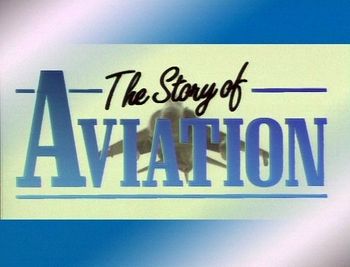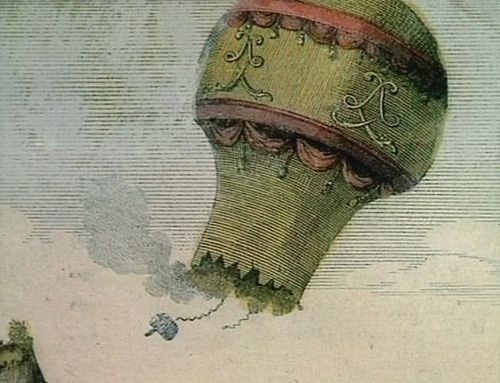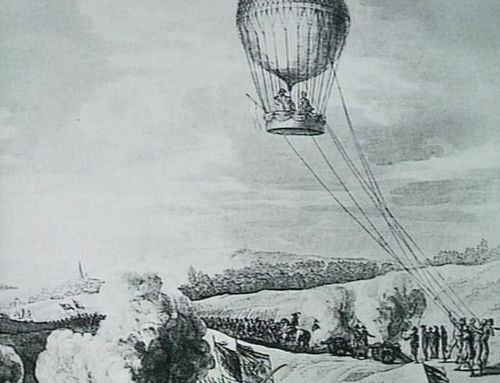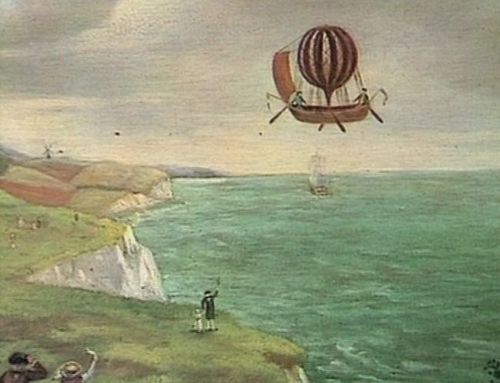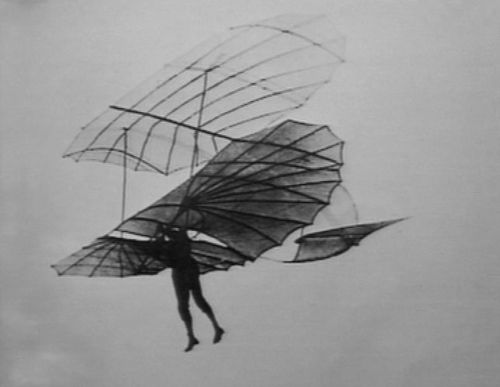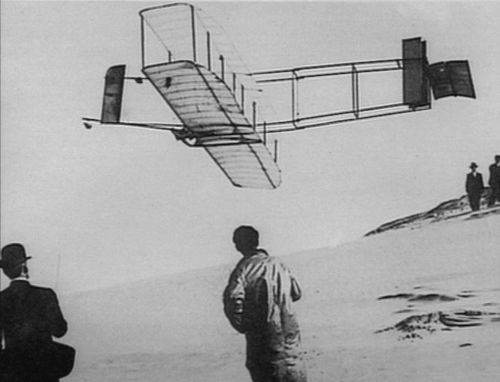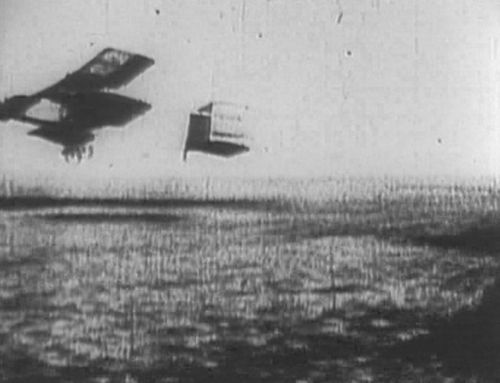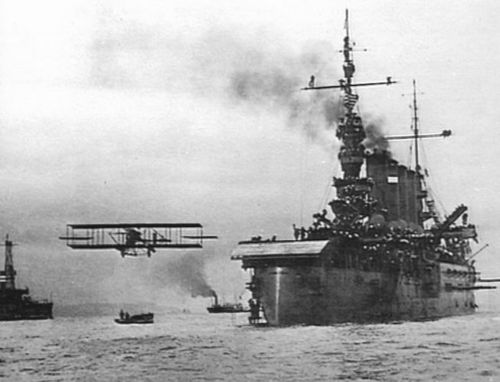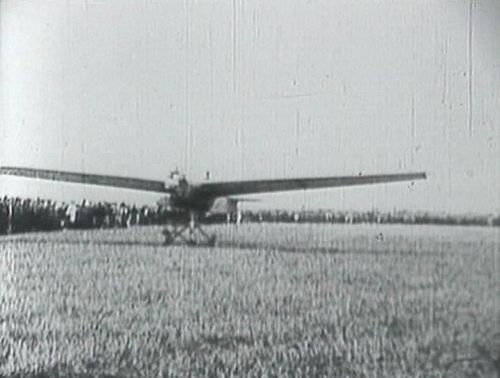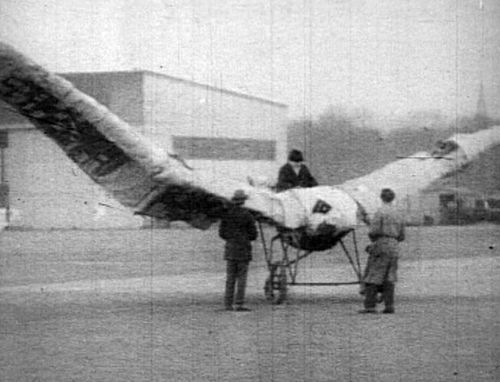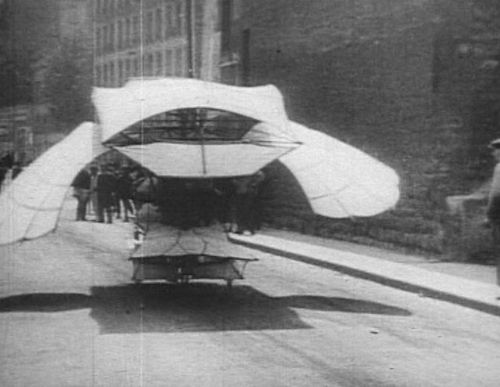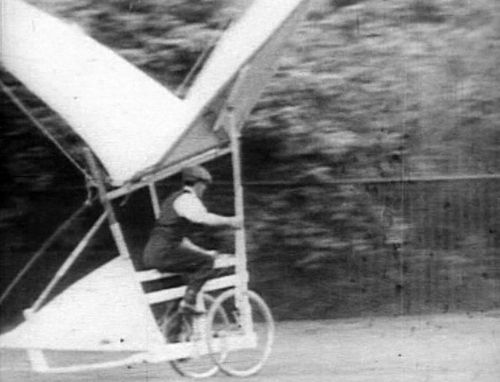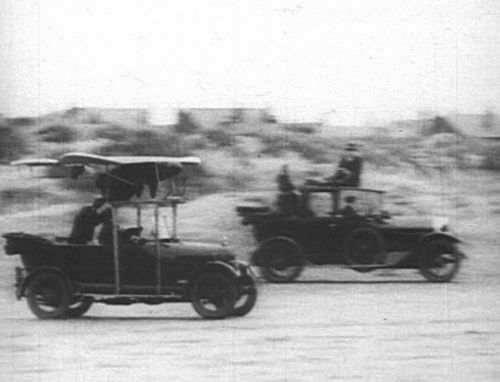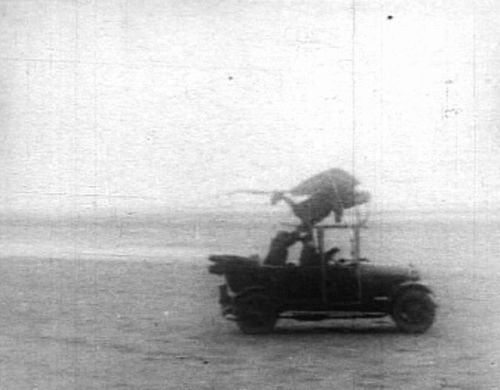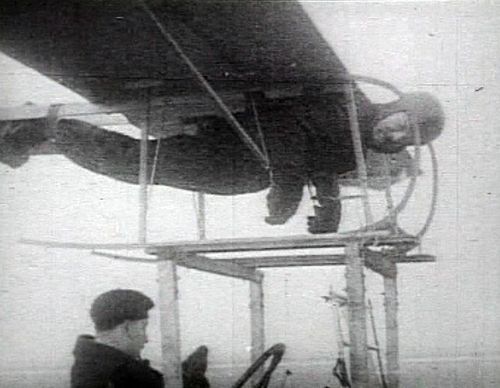The Story of Aviation
Documentary (2005)
(Synopsis needed)
Ballon Etienne et Joseph Montgolfier
Climb of the balloon of E&J.Montgolfier (225 Kg, 800m3) on 4th June 1783 in Annonay (France). The balloon went up at 1000m high and on 2 kilometers of distance in 10 minutes around.
Montgolfière Le Réveillon
Experience at Versailles on 19th Septembr 1783, carrying a lamb, a duck and a cock in a basket. The balloon named “Le Réveillon” (400 Kg 1400m3) went up at 500 m high on 3,5 kilometers of distance, for 8 minutes flight. The animals were alive and in healthy condition when the balloon landed. The experience showed that a balloon could carry a load and one can survive in altitude. Next step will be human flight.
Montgolfière Le Réveillon
First human flight at the Manufacture Royale des papiers peints La Folie Titon in Faubourg Saint-Antoine, close to Paris, on the 19th October 1783. Captive ascent with Jean-François Pilâtre de Rozier on board, 81m high. A second ascent done with Pilâtre de Rozier, and André Giroud de Villette, at 105m high.
Ballon Dihydrogène Jacques Charles
1st December 1783. Take off from the Jardin des Tuileries of the dihydrogen balloon of J.Charles, with Marie-Noël Robert. They landed some tenth kilometers farther in Nesles la Vallée (Val d’oise). This was the 1st successful experience of a human flight with a gas-filled balloon.
Ballon Dihydrogène Jean-Pierre Blanchard
First flight over the Channel on the 7th January 1785, between Dover and Guînes, in 2h25 carrying J.P.Blanchard and John Jeffries. Jean-Pierre Blanchard aeronaut had made 66 flights in several countries, when he died in 1809 after having been hardly injured in an accident in 1808.
Ballon d’Observation L’entreprenant
First military use of a balloon by the French republican army, during the Battle of Fleurus in June 1794 against European coalition (Austrian, Dutch, British and German). There won’t be any further military uses of balloon until secession war in the USA.
Nassau Balloon Charles Green
First flight between London to Weilburg in Germany by British aeronaut Charles Green on the 7th and 8th November 1836. The travel took 18 hours for 772 kilometers of distance.
Unidentified Aircraft
Ballon Dirigeable Henri Giffard
On 24 September 1852 Giffard made the first powered and controlled flight travelling 27 km from Paris to Trappes.
Otto Lilienthal Segelflugzeug
Lilienthal's greatest contribution was in the development of heavier-than-air flight. He made his flights from an artificial hill he built near Berlin and from natural hills, especially in the Rhinow region.
Otto Lilienthal Segelflugzeug N°3
This pictures shows its glider N°3 on which he made its first successfull flight in 1891.
Otto Lilienthal Segelflugzeug N°11
This pictures shows its glider N°11 in 1894.
Otto Lilienthal Segelflugzeug N°13
Biplane glider N°13 on which Otto Lilienthal will crash on the 9 August 1896, and die the day after.
Wright Glider N°2
Wilbur Wright first flight with this model N°2 in 1901.
Unidentified Aircraft
Wright Flyer I
First motorized flight, taking off by its own on the 17th December of 1903. 4 flights made in the day by Orville and Wilbur. Duration 59 seconds, and 259 meters of distance. Airplane was born.
Wright Flyer III
Wright A
Wright B-1
Seaplane version of the model B which went in production in 1910.
Voisin Farman I
Since 1907, piloted by Henri Farman, the first heavier-than-air flight lasting more than a minute in Europe, and also to make the first full circle. Around 80 were built.
Blériot XI
First aircraft to cross the Channel from Calais to Dover on the 25th July 1909. Successful aircraft at this era, built at 100 samples.
Curtiss Golden Flyer
First aircraft to have took off from and land on a Navy ship on 14th November 1910. This two first pictures might figure one of these experience from the US Navy ship Pensylvania, in the San-Francisco bay on 18 January 1911.
Albessard La Balancelle
Experimental aircraft with tandem wings to improve security of flights . The design “ Autostable” was efficient but no commercial issues went later on though research going on till the 1926 . Built in 1913.
Albessard Aérobus
Further development of La Balencelle prototype, built in 1914.
